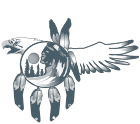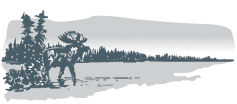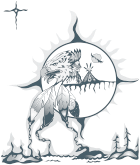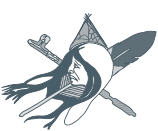This is part one of a two-part interview with educator Jason Jones. Watch for more from Jason in our upcoming newsletter.
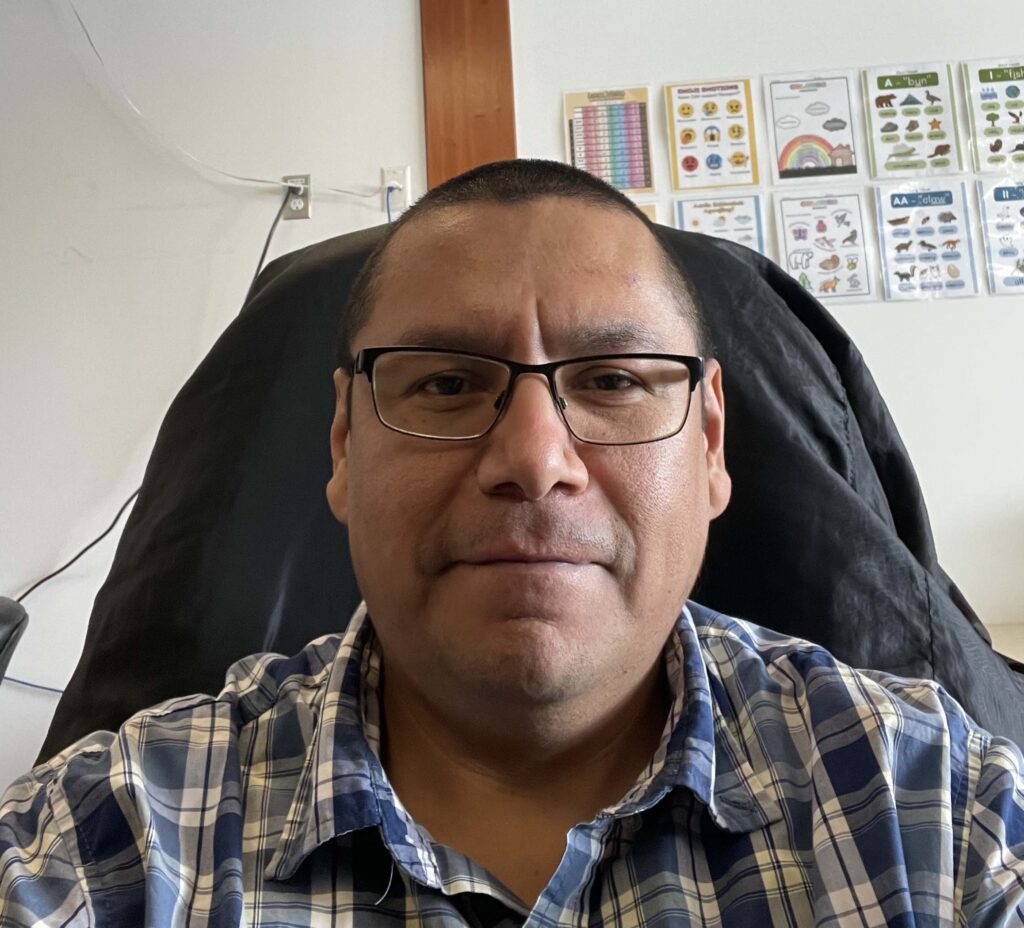
1. Jason, we want to introduce you to readers. How do you describe yourself?
I’m from Nigigoonsiminikaaning (Red Gut) First Nation in Ontario. I think the best way to describe me is an Ojibwe language nerd. I like thinking about how words are created and where they come from. I’m constantly in awe that, at one point in time, the language had to start from scratch. To see it evolve to where it is right now just amazes me.
2. How and when did you learn Ojibwe?
I’m a second language learner, and I’m still learning. I’m learning Ojibwe by putting magnets on my fridge and sliding words around with prefixes and suffixes. I find that once I learn the structure of the language, I’m able to convey what I mean in Ojibwe.
3. Ojibwe and Anishinaabemowin are often used interchangeably. Can you please explain the difference between them?
In my opinion, I think Anishinaabemowin is the general word for Indigenous language, that’s what the “mo” ending means: language or speaks. The “win” ending turns it into a noun. But overall I think Anishinaabe means Indigenous person and Ojibwe identifies the type of Indigenous person.
4. Languages often borrow from other languages, but Ojibwe does not do this. What is the language based on?
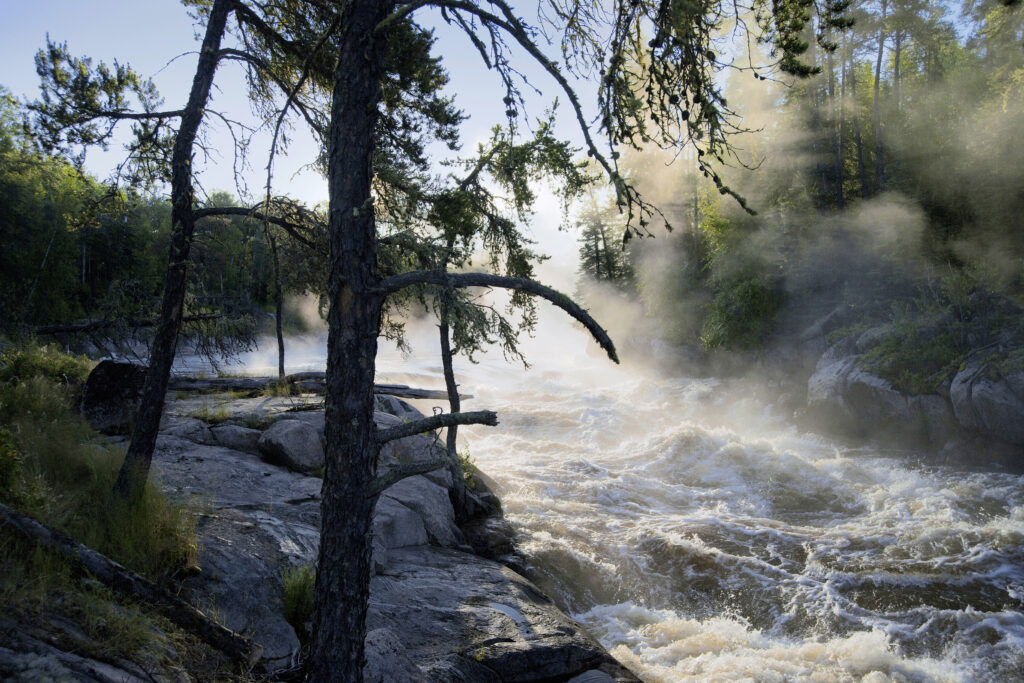
The language comes from the land. The land teaches us how things function, the actions they take, and what we see. We can almost visualize what’s happening when we’re speaking. It comes back to our teachings. We talk about energy — everything is just energy in motion. We see things as movement or constantly changing, as is life. That’s the way the language works; it’s a verb-based language and allows us to see what is being said, almost like we’re there and it triggers our memories to see it.
Dakaanimad (the cool wind blows)
5. So Ojibwe words express a state of being?
Yes, something is always doing something or being in a still state. For example, jaagide means it burns. The word parts are:
- jaag – use up, exhaust, deplete
- ide – it is heated, affected by fire (it burns)
6. Can you give us another example of a state of being, using the word sewing? Please break it down for us and explain how the word comes from the land.
Gashkigwaaso – s/he is sewing
- gashk – to enclose
- gwaaso – through sewing
You can visualize the word ‘sewing.’ Other words have this word part “gashk,” which means to enclose something. Everything is energy in motion. In another word with gashk, we have gashkii dibikad and it describes, night is enclosing the sky. The sky is becoming dark.
- gashk – enclose
- ii – state/condition
- dibikad – it is being night
We visualize the sky being enclosed with darkness. We’ve all seen this before. The language brings us there, like we’re experiencing that feeling again of seeing the sun go down and the sky getting darker and darker.
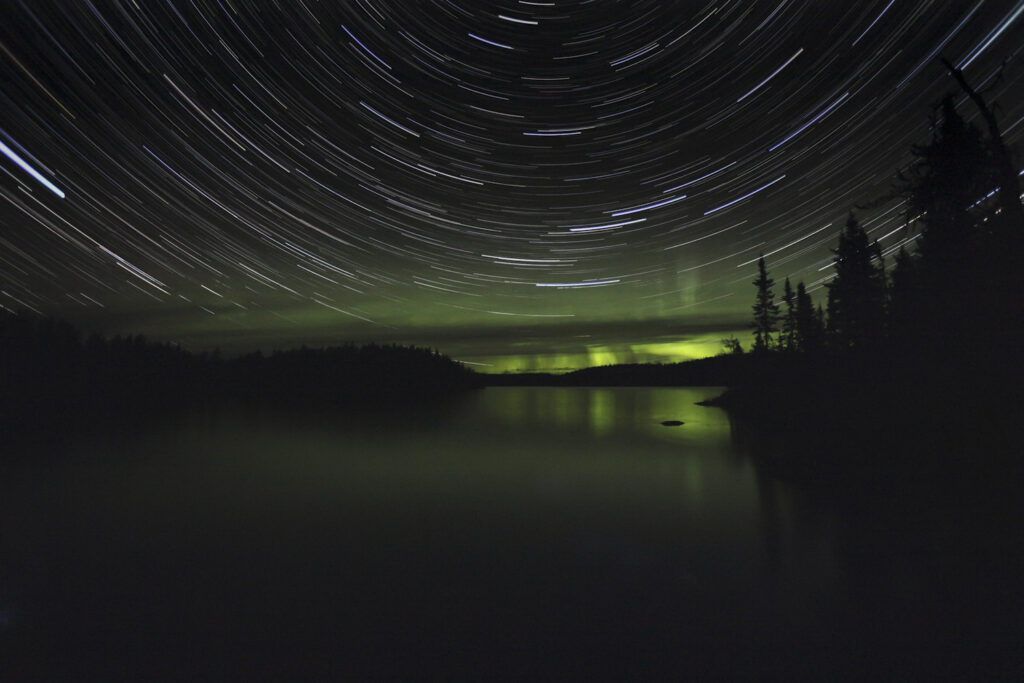
7. Ojibwe is a highly active language compared to English. Does this make it difficult to translate?
Yes. Ojibwe is 80% verbs. English is 60% nouns. When you think in Anishinaabemowin, you think in verbs. When you think in English you think in nouns. So, one of the struggles when translating is that you want to ‘verbify’ nouns. It’s also hard to translate into English because there are three translations that happen when we go from Ojibwe to English:
- Literal translation
- Implied translation
- Cultural translation
Often, when we translate from Ojibwe to English, we go right to the implied translation. We need to remember that there is a literal translation, and that’s where the word parts come in. That’s why we break down words. It helps us visualize the language.
8. Can you give us an example of the three translations?
We can see the three translations when we look at the names of months, like Waatebagaawigiizis (Leaves changing colour moon):
- waate – bright, through light
- bag – leaf
- aa – state or condition
- wi – being
- giizis – moon, month, sun
There are many cultural teachings in the language, and many come from Nenaboozhoo (Nanabush). He was always observing everything around him. I think that’s what we do when we talk about the months in Ojibwe, we’re following his lead and observing everything around us, and these month names reinforce those teachings.
This is what I mean when I say the culture is built inside the language.
I think we need to recognize that the months in Ojibwe don’t match up with the 12-month calendar that we see, because ours has 13 months/13 full moons in the year. So, September is what we call Waatebagaawigiizis but that doesn’t really start until middle or later part of September. We’re still in Wild ricing month when September begins.
Learn more and download the Pimachiowin Aki lunar calendar: https://pimaki.ca/the-lunar-calendar-explained/
9. Dewe’iganaatig (drumstick) is a noun in English. In Ojibwe, it’s a verb. Can you explain how the word is translated?
I guess in this form it is a noun but here are word parts in it that are verbs:
- de – heart
- we – sound, sounding, perform useful action
- igan – turns verb to noun
- aatig – organic solid wood
Its literal translation is ‘heart sounding object’ that does an action to something that’s made out of wood. When we see the word parts (above), we visualize the actions that it does, and that’s the verb part of it.
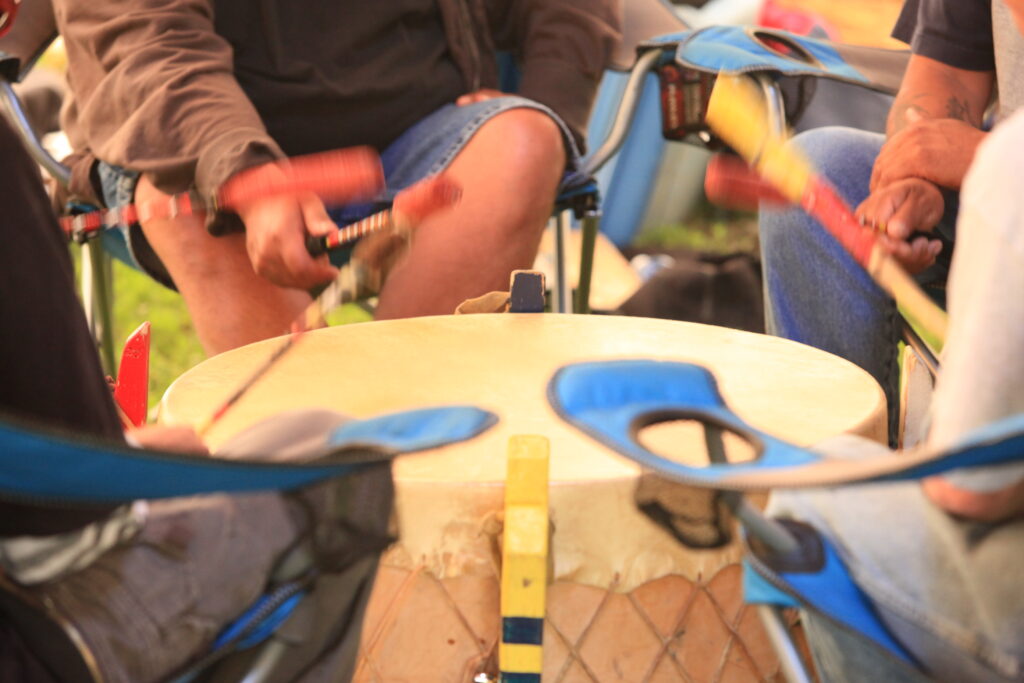
10. Ojibwe is translated by the overall meaning, not individual words.
Yes, and the cool thing about the language is that a single word can be a whole sentence. You start with a single word and add on to it and it becomes longer and more meaningful.
Example:
- Manoonin (wild rice)
- Manooninikewin (wild ricing activity, noun form)
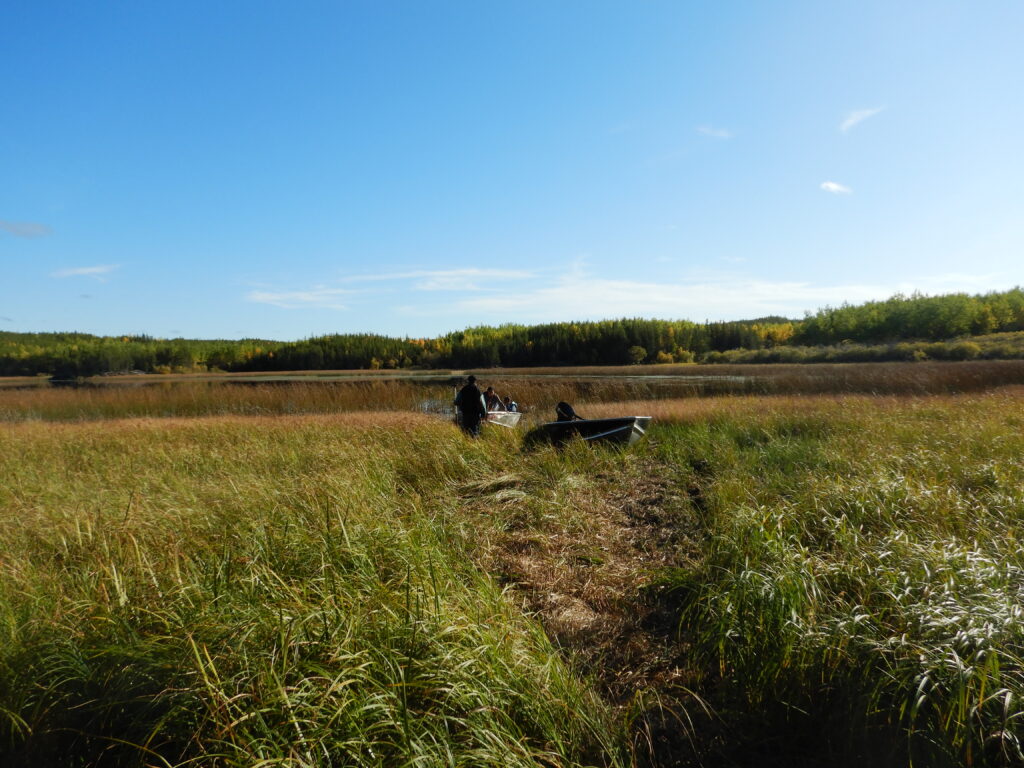
11. So a single Ojibwe word can express a whole sentence, idea or phrase?
Yes, that’s why we have all of these First Nation signs with long words on them. I know exactly what happens in an area because of its name. Milwaukee is an example – it comes from the word ‘mino-akiing’ and somewhere through translation it got mixed up to Milwaukee, but I can hear the word parts in there:
- mino – good, well
- akiing – earth, soil
I golfed there before and this one time, and only time I hit the sand trap and the soil looked so clean. Cleanest dirt I’ve ever seen. From most of these place names, and names of communities, we can get a pretty good idea of what’s there.
12. What do the names of the four First Nations in Pimachiowin Aki tell you?
a) Mishi-baawitigong (Little Grand Rapids First Nation)
I think this means grand rapid in my dialect because the word mishi means grand/ giant. We hear it in Mississippi river – mishiziibi.
- mishi – giant, grand
- ziibi – river
- baawitig means rapids
- ong (the ending) means in/at/by something
b) Bawingaasi (Pauingassi First Nation)
To me, this sounds like baawigaas, meaning small/little rapids. The ending gaas means small.
c) Miskoziibi or Miskweyaabziibi (Bloodvein River First Nation)
I like these words.
Miskoziibi (Red River)
- misko (preverb) means red
- ziibi is river
Miskweyaabziibi (Bloodvein River)
- miskwe – blood
- yaab – string-like
- ziibi – river
d) Asatiwisipe (Poplar River First Nation)
- azaadi is ‘poplar’ in my area
- wi turns the noun to a verb, so being a poplar
- sipe is derived from ziibi
When I hear it the way it’s spelled, it sounds like Oji-cree or Cree influence on it. They tend to use the harder sounds of Ojibwe language a bit more than where I’m from, which is Rainy Lake.
13. Many place names in Pimachiowin Aki have similar endings: ing, ang, ong, tik or kak. Why is this?
Place names usually come from what the area is known for or events that happened there. When a place name ends in a vowel with N-G at the end, it indicates in, at, on or by something.
Examples:
- Sheepawagananing (Going through the smaller straight at Poplar Point)
- Mangonawacheewining (The long stretch of the Poplar River with no rapids named after a loon who was having a snack)
14. What about tik and kak?
Examples:
a) Kamitawakichiwungwipowitik (Rapids where sand washes up)
I think the ending tik is much longer than just tik. It could mean a few things, like aatik ending would mean “wood/organic solid” but in this case the ending is powitik and the word is powitik, means rapids in Oji-Cree, Cree.
b) Kamatapee’andakak (Trees grow out into the lake)
This end is similar because the ending is actually aandak when means “tree (especially fir), bough.
Source: https://pimaki.ca/wp-content/uploads/Poplar-River-First-Nation-Named-Places-Map.pdf
15. Where can people find your lessons to learn Ojibwe and connect to their cultural heritage?
Sayitfirst.ca has much of our books. Wakingupojibwe.ca is where I’ve been putting resources. Both of these will help with language.
Podcast – Paul Anishinaabemo (Speaks Ojibwe)
Explore more lessons in Anishinaabemowin with mother and son Sophia and Paul Rabliauskas, recorded in Poplar River First Nation:
https://open.spotify.com/show/5EQmK24mhQmQaGEzFU9H3U
